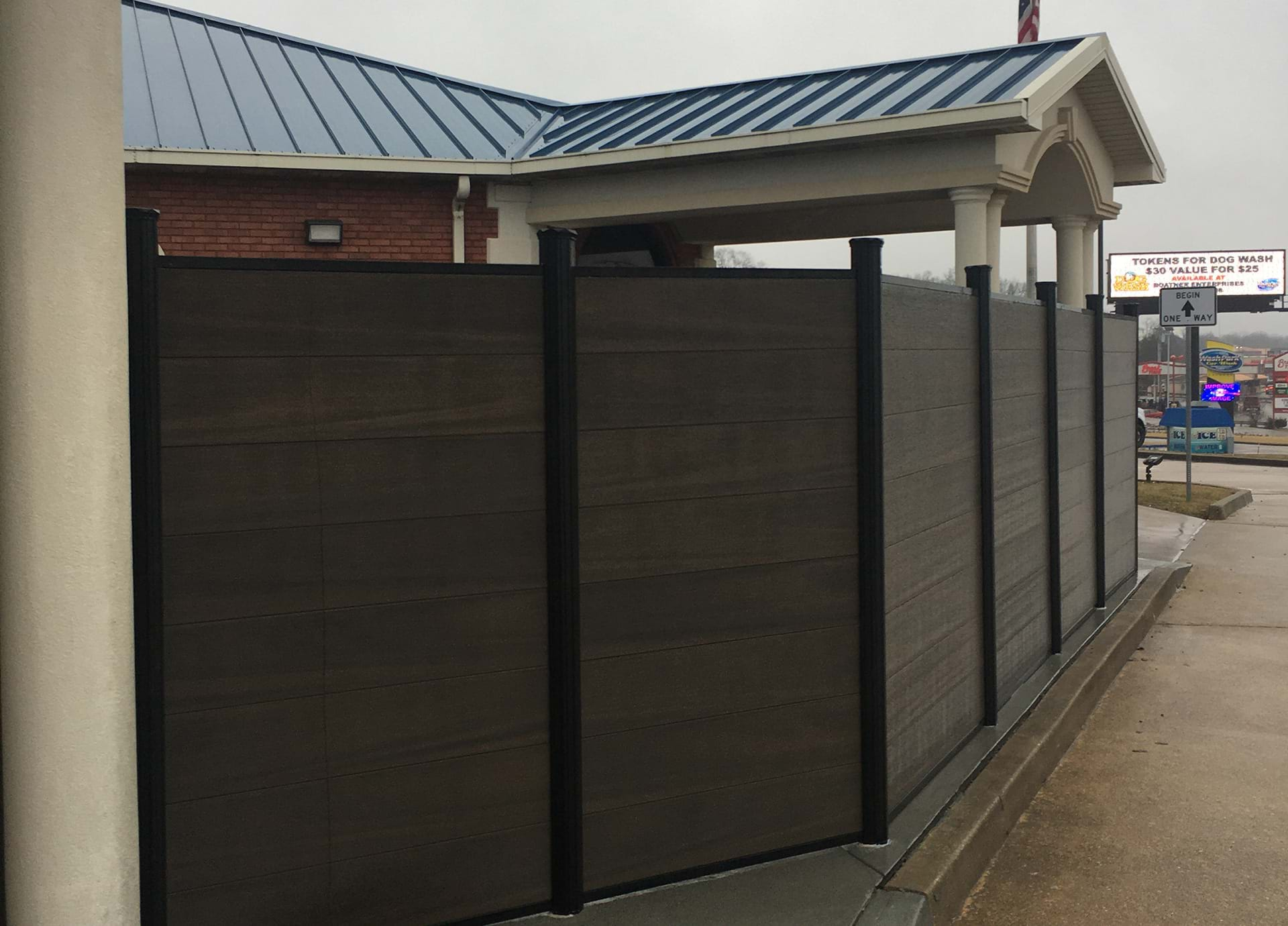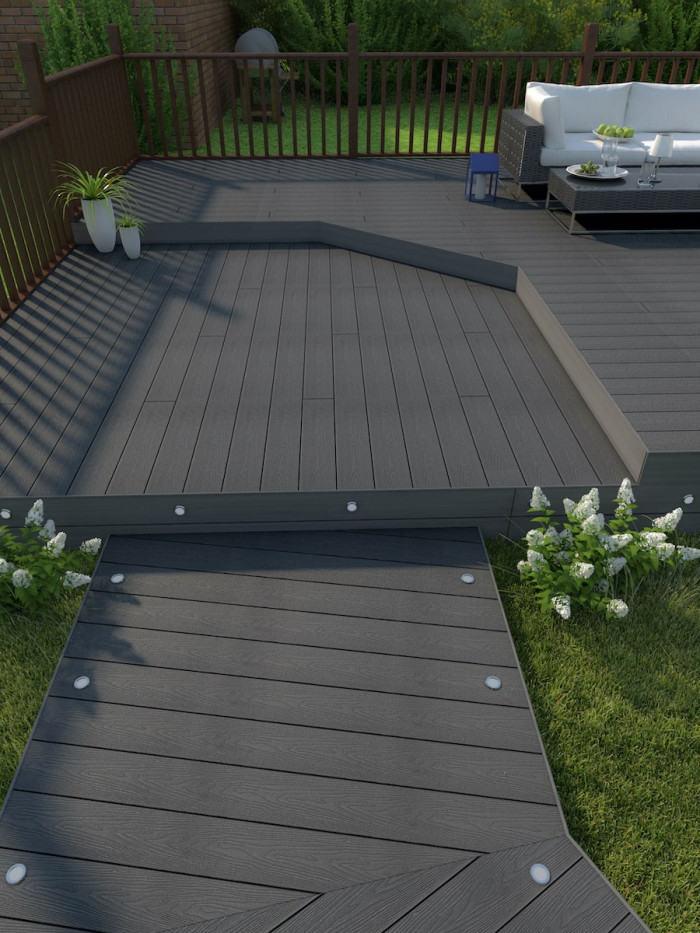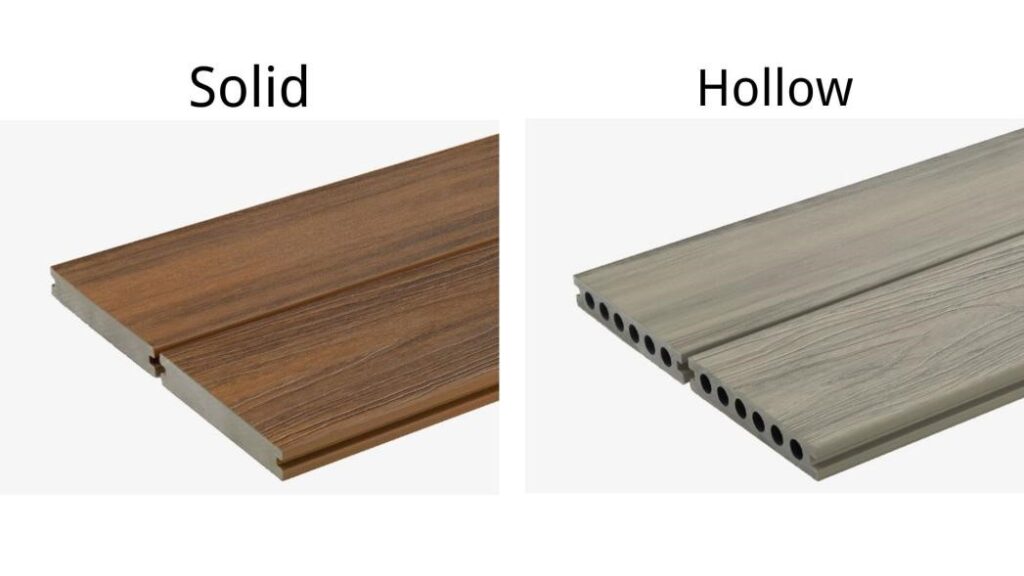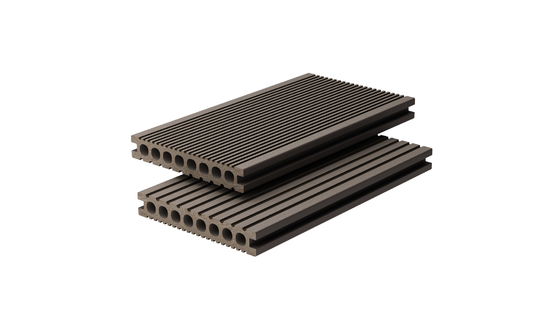
Top 20 Manufacturers of composite fence in the World
August 3, 2022
Why Choose WPC wood cladding for your exterior walls
August 11, 2022”
Hey there, deck dreamers! Let’s talk about the magic wand of outdoor makeovers – composite decking. Picture this: You’re sipping lemonade on a splinter-free surface that looks like freshly stained cedar but acts like a superhero against rain, mold, and those pesky termites. That’s the reality composite materials bring to your backyard parties and quiet morning coffees.

Now here’s where it gets interesting. When I helped my neighbor choose decking last summer, we discovered there’s not just one flavor to pick. The two heavyweights in the ring are solid composite deck boards (think heavyweight champion material) and their hollow counterparts (the agile budget-friendly option). Both promise that sweet low-maintenance lifestyle we all crave, but boy do they play different games!
Remember that friend who swears by solid decking? They’re probably loving the way it mimics real wood grain while laughing off heavy patio furniture. But then there’s my cousin who went hollow – she’s all about that easy DIY installation and extra cash for her grill upgrade. Curious which camp you might belong to? Let’s break it down like we’re comparing smartphones at a tech store.
By the way, if you’re hungry for more composite material insights, I found this treasure trove of info that helped me understand why these modern deck boards are outshining traditional wood in so many ways. Seriously, some of these innovations will make you want to rebuild your deck tomorrow!
Let me tell you about the rockstar of outdoor surfaces – solid composite decking. Picture this: I recently helped my neighbor install this stuff, and wow does it make traditional wood look like yesterday’s news. These dense boards combine recycled plastics and wood fibers in a marriage that laughs in the face of harsh weather. You know those patio chairs that leave dents in softer materials? Not here – we literally tested this by dropping cinder blocks during installation (don’t try that at home!).
 What really sold me was discovering they maintain their color better than my grandma’s vintage Buick. Unlike regular wood that needs annual TLC, I’ve seen 5-year-old composite decks that still look fresh from the factory. The weight? Yeah, it’s substantial – you’ll want an extra pair of hands during installation. But that heft translates to stability that handles hot tubs and outdoor kitchens without breaking a sweat.
What really sold me was discovering they maintain their color better than my grandma’s vintage Buick. Unlike regular wood that needs annual TLC, I’ve seen 5-year-old composite decks that still look fresh from the factory. The weight? Yeah, it’s substantial – you’ll want an extra pair of hands during installation. But that heft translates to stability that handles hot tubs and outdoor kitchens without breaking a sweat.
Here’s a pro tip from my experience: The thermal resistance means no more burning your feet on summer afternoons. Why does this matter? Imagine hosting barbecues where guests aren’t doing the hot-surface shuffle! While it costs more upfront, I’ve calculated that the elimination of staining and sealing saves about 20 hours of maintenance yearly – time better spent actually enjoying your outdoor space.
 Funny story – during a recent storm, my neighbor’s wooden deck boards went flying while our composite surface stayed put. That weather resistance isn’t just marketing talk. The hidden benefit? Sound absorption. When my kids play upstairs, the deck below stays surprisingly quiet – a bonus I never expected from decking materials.
Funny story – during a recent storm, my neighbor’s wooden deck boards went flying while our composite surface stayed put. That weather resistance isn’t just marketing talk. The hidden benefit? Sound absorption. When my kids play upstairs, the deck below stays surprisingly quiet – a bonus I never expected from decking materials.
Would I recommend it? If you’re tired of constant maintenance and want something that survives both toddler tantrums and Mother Nature’s mood swings – absolutely. Just make sure your foundation can handle the weight, and maybe hit the gym before installation day!
Let me tell you why I fell in love with solid composite decking when renovating my backyard last summer. The biggest wow factor? These boards nailed that authentic wood look so well that my neighbor actually asked if I’d used rare tropical hardwood! The secret’s in those textured grain patterns that catch the sunlight just right. Plus, they’re surprisingly quiet underfoot – when my dog races across the deck, it’s more of a soft thud than that annoying clatter you get with some materials.

But here’s the flip side I wish I’d known earlier – these bad boys are heavy as a hippo! My DIY installation weekend turned into a three-day marathon. We needed three people just to maneuver the 16-foot boards into position. If you’re thinking of going this route, definitely check out the installation guides I later found super helpful.
The sound absorption really shines during family gatherings. Last week, my cousin dropped a platter of burgers and we all gasped… then realized the crash was way quieter than expected. That dense composition acts like a natural sound dampener – perfect for homes near busy streets. Though fair warning: that same density makes them about as easy to lift as a refrigerator. You’ll want proper equipment or some strong friends on speed dial!

Here’s the real talk: while they’re tougher than my grandma’s fruitcake, that durability comes with some sweat equity. We almost gave up when trying to cut angles for our octagonal seating area. Pro tip from my mishaps: invest in specialized blades and maybe practice on scrap pieces first. But hey, two seasons later with zero warping or splinters? Worth every drop of sweat!
Let me tell you why my neighbor Sarah chose hollow composite decking for her backyard makeover last summer. These clever boards with their signature hollow channels aren’t just empty spaces – they’re engineering marvels that reminded me of honeycomb structures in nature. I’ve personally found they strike a perfect balance between durability and practicality, especially for DIY enthusiasts like myself.
What really won me over was the environmental aspect. Unlike some building materials that claim to be green, hollow composite decking actually uses recycled plastics and wood fibers – I’ve seen manufacturers incorporate everything from grocery bags to sawdust. When I installed mine, the flexibility of these boards made contouring around my garden’s curved edges surprisingly manageable. Pro tip: The lightweight nature means you can actually carry multiple boards at once without throwing out your back!


Here’s the kicker – while installing my deck, I calculated that hollow composite cost me about 30% less than solid alternatives. The hidden channels aren’t just for show; they create natural pathways for water drainage and cable management. But fair warning: I learned the hard way that you need to be diligent about cleaning those channels during fall when leaves start dropping. A quick blast with the garden hose usually does the trick though.
For those torn between options, this comprehensive guide breaks down maintenance requirements beautifully. What really sealed the deal for me was realizing that the hollow design actually helps the material expand and contract with temperature changes – no more warped boards after winter like I experienced with traditional wood!
Let me tell you why hollow composite decking became my go-to choice for the lakeside cabin project last summer. While the solid boards get all the glory, these lightweight alternatives surprised me with their wallet-friendly charm. At about half the price of solid decking (don’t quote me exactly, but you get the idea), they let me stretch the budget to include those fancy glass railings I’d been eyeing.
 The real kicker? They handle foot traffic just as well as their solid cousins during backyard BBQs. I’ve had mine endure three seasons of dropped grilling tools and dragged patio furniture without showing wear. Installation was a breeze – my niece and I knocked out the whole deck in a weekend using basic tools from my favorite DIY resource.
The real kicker? They handle foot traffic just as well as their solid cousins during backyard BBQs. I’ve had mine endure three seasons of dropped grilling tools and dragged patio furniture without showing wear. Installation was a breeze – my niece and I knocked out the whole deck in a weekend using basic tools from my favorite DIY resource.
But here’s the catch nobody tells you – morning dew becomes your nemesis. Those clever hollow channels that make it light? Perfect little waterways for pooling water. I learned the hard way after finding a mini ecosystem growing in the grooves. Now I keep a push broom handy for quick sweeps after rain showers.
 Would I recommend it? Absolutely – if you’re okay with playing weather watchdog. For budget-conscious homeowners or DIY warriors tackling their first deck project, it’s like training wheels for composite decking. Just don’t expect that ‘install and forget’ luxury the premium options offer. Pro tip from my mishaps: invest in some marine-grade silicone sealant for the end cuts!
Would I recommend it? Absolutely – if you’re okay with playing weather watchdog. For budget-conscious homeowners or DIY warriors tackling their first deck project, it’s like training wheels for composite decking. Just don’t expect that ‘install and forget’ luxury the premium options offer. Pro tip from my mishaps: invest in some marine-grade silicone sealant for the end cuts!
Finding Your Perfect Match: Which Composite Decking Makes Sense for You?
After living with both solid and hollow composite decking at different homes, I’ve realized there’s no universal ‘best’ choice – it’s like comparing hiking boots to running shoes. The solid planks we installed at our mountain cabin? They’ve handled three winters of heavy snow like champions. But when I helped my neighbor build her rooftop deck last summer, those lightweight hollow boards saved us days of backbreaking labor.

Here’s the real talk: Solid decking is your go-to if you’re creating an outdoor living room that needs to withstand everything from pizza ovens to kids’ hockey games. The weight gives it that substantial feel underfoot – no springy sensation here. But boy, did I curse those planks when carrying them up to our second-story balcony!
Now the hollow-core options? They’re the unsung heroes for DIYers. I recently used them for a floating deck project around our pool, and cutting them with regular wood tools was a breeze. Though I’ll admit – during heavy rains, I do check those drainage channels more often than I’d like.

What really surprised me? Both types have come a long way in mimicking real wood. Last month, a friend swore my solid composite boards were reclaimed teak! But if you’re watching your budget, those hollow planks can save enough money for nice outdoor furniture.
So here’s my two cents: Think about how you’ll actually use the space. Hosting big gatherings? Go solid. Want a quick refresh? Hollow might surprise you. Either way, modern composite materials beat replacing rotten wood every few years. What’s your deck’s main purpose – showpiece or practical space? Your answer will point you right.

